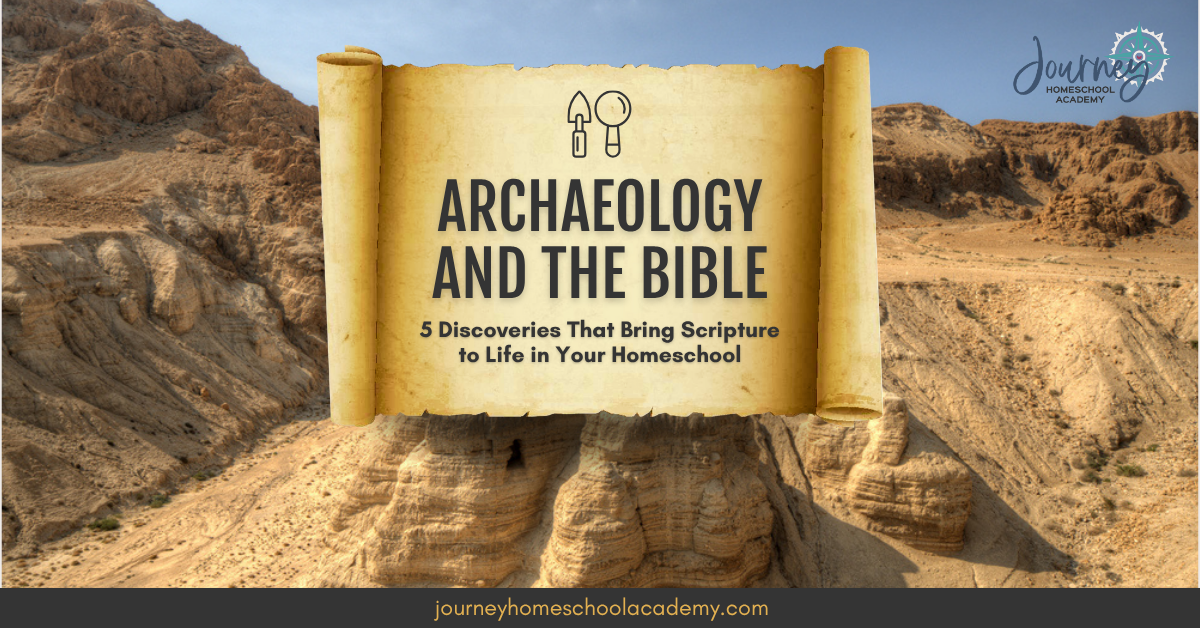If you’ve ever sat around the kitchen table with your high schooler and heard, “But how do we really know the Bible is true?”, you’re in good company.
As homeschool parents, we want our kids to have a deep, unshakable faith. We want them to see that the Bible isn’t just a book of good morals—it’s a record of real events that happened in real places, involving real people. The exciting news is that archaeology keeps giving us evidence that backs that up!
Archaeology and the Bible
5 Discoveries That Bring Scripture to Life in Your Homeschool
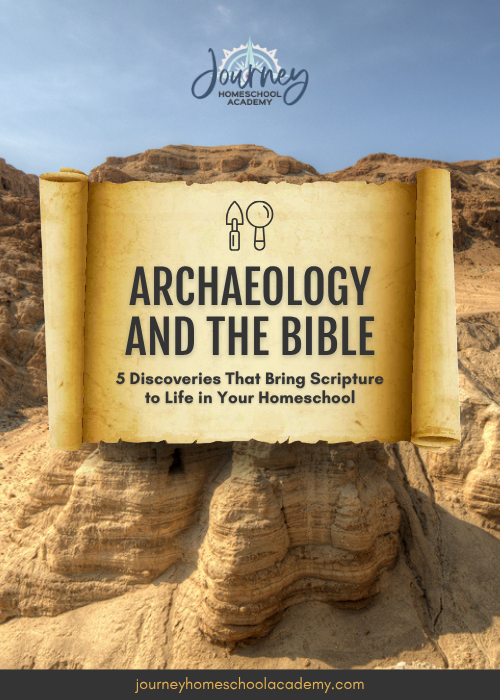
Every year, new discoveries confirm details that line up perfectly with the Bible. These finds help our kids see that Scripture and history tell one seamless story. That’s one reason I love Journey Homeschool Academy’s Equipped! Bible course. It gives teens a big-picture understanding of Scripture and helps them connect faith with facts in an engaging way.
Today, let’s look at five fascinating archaeological discoveries that support the Bible and explore how you can bring them to life in your homeschool!
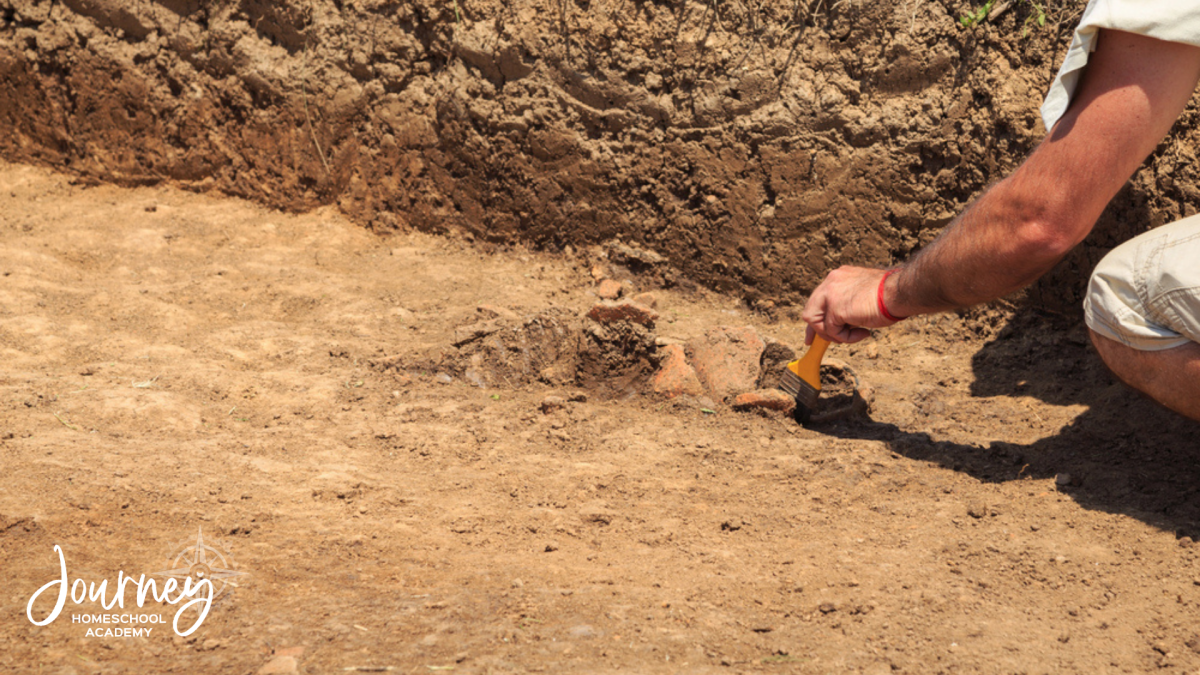
Why Archaeology Matters for Christian Homeschoolers
When my kids hit the high school years, I started noticing their questions went a lot deeper. They didn’t just want to know what the Bible says; they wanted to know why they could trust it.
That’s where archaeology helps so much. It bridges the gap between faith and history. Every coin, inscription, and artifact gives us a peek into the world of the Bible. When our kids see that the Bible’s details match what archaeologists find in the ground, it strengthens their confidence that God’s Word is reliable.
Teaching archaeology doesn’t mean you need a degree or fancy equipment. It simply means helping your students connect what they read in Scripture with what’s been uncovered in the real world. Let’s dig into five discoveries that do just that:
1. The Pool of Siloam (Discovered 2004)
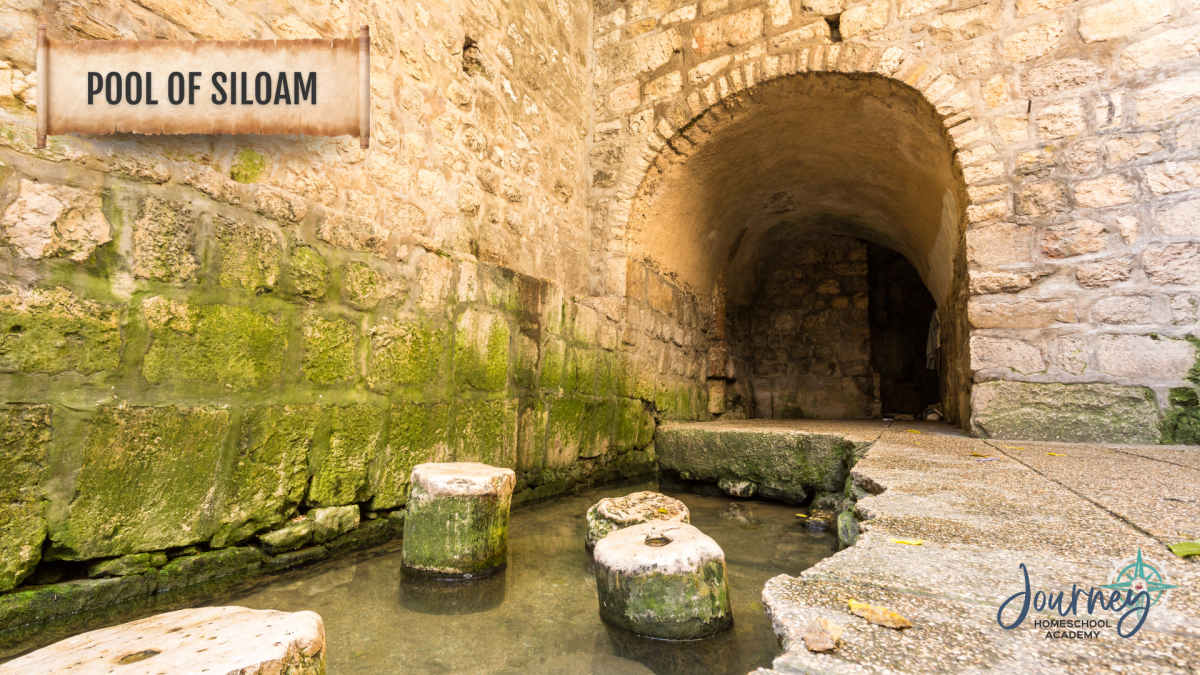
Bible Connection: John 9:1–11
In the Gospel of John, Jesus heals a man born blind at a pool called Siloam. For centuries, some scholars claimed this story was just symbolic. Then in 2004, construction workers in Jerusalem stumbled upon a series of stone steps leading to a large pool fed by the Gihon Spring.
Archaeologists from the Israel Antiquities Authority confirmed it was the very same Pool of Siloam mentioned in John 9. Today, parts of the pool are still being excavated, and visitors can walk where Jesus once performed that miracle.
💡Homeschool idea:
- Watch “The largest dam in ancient Israel was uncovered in the City of David” to see how archaeologists found a massive 2,800-year-old dam beneath the Pool of Siloam. It gives a fascinating look at ancient Jerusalem and helps your family picture the place where Jesus healed the blind man. Then read John 9 together and discuss what it means that this story took place in a real, historical location.
💡Sources:
2. The Tel Dan Inscription
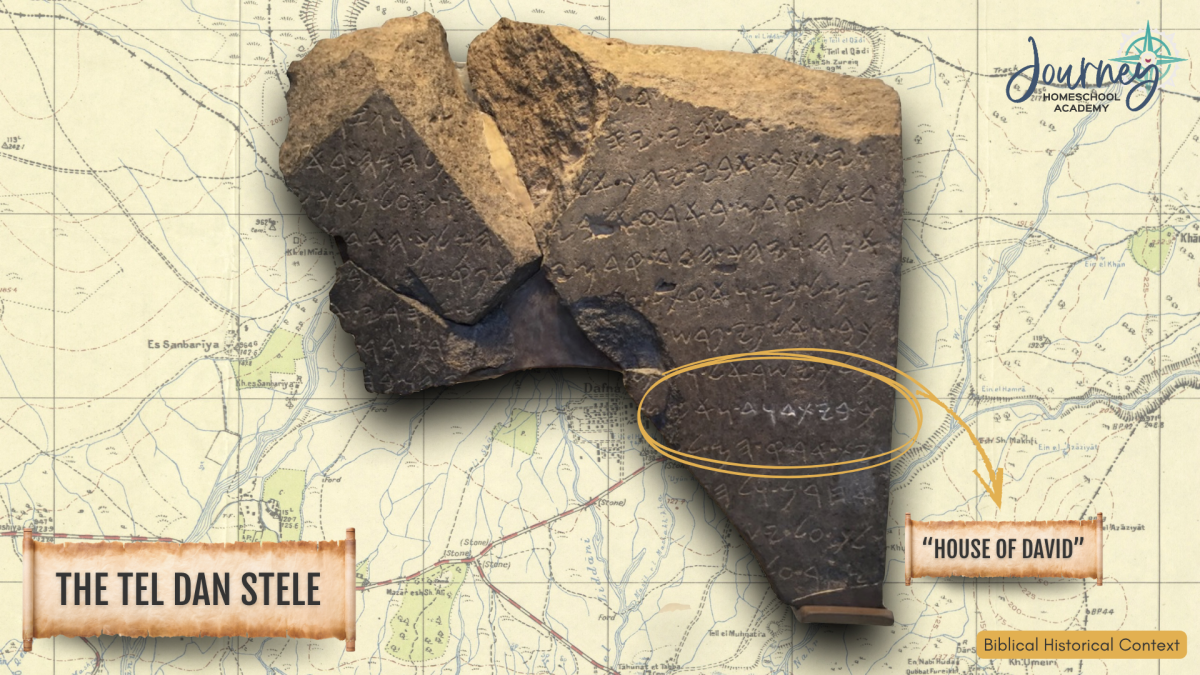
Bible Connection: 2 Samuel 7
For a long time, some scholars argued that King David was a myth, a nice story but not a real person. That changed in 1993 when archaeologists uncovered a broken stone in northern Israel called the Tel Dan Stele.
The stone’s ancient Aramaic writing includes the phrase “House of David.” It’s the first known reference to King David outside of Scripture. That small phrase changed everything, proving David wasn’t a legend but a real historical king.
💡Homeschool idea: Read 2 Samuel 7 together and talk about God’s promise to David. Then show your student a picture of the Tel Dan Stele and point out where “House of David” appears.
💡Sources:
3. The Caiaphas Ossuary
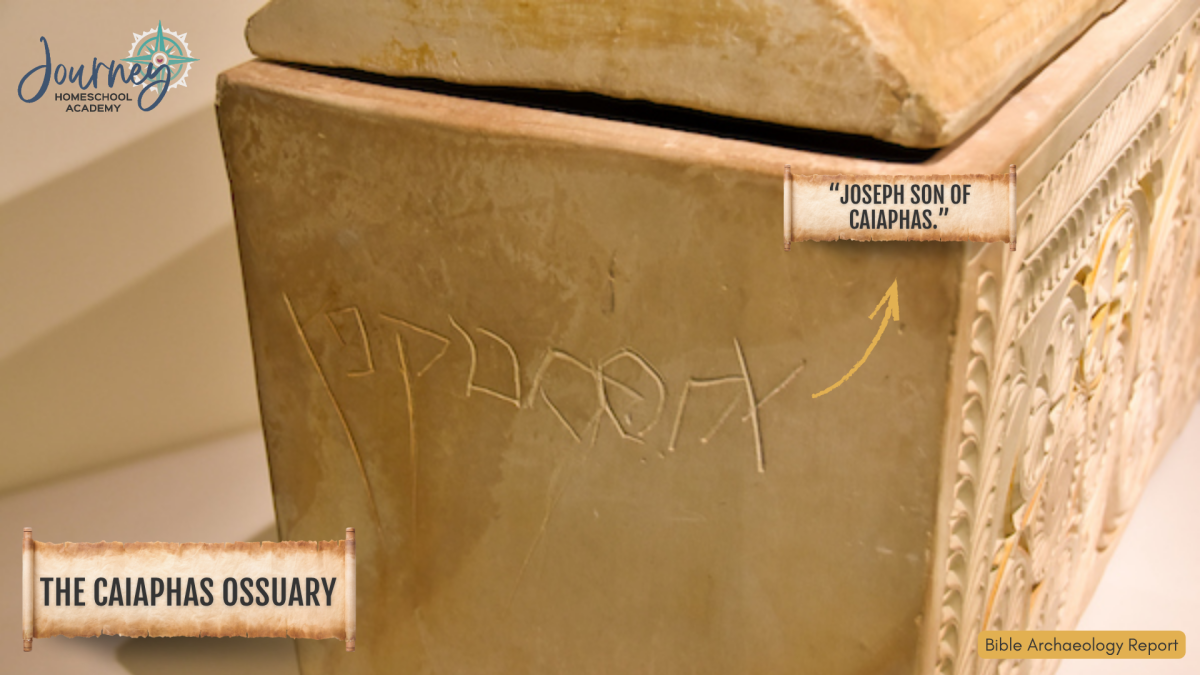
Bible Connection: Matthew 26:57–68
In 1990, while workers were building a water park in Jerusalem, they found a burial cave with several ornate limestone boxes called ossuaries. One of them was beautifully carved and inscribed with the name “Joseph, son of Caiaphas.”
Archaeologists identified it as belonging to the high priest who presided over Jesus’ trial. Inside were the bones of a 60-year-old man, which fits perfectly with the biblical account.
This discovery reminds us that Jesus stood before a very real man named Caiaphas, not a mythical character.
💡Homeschool idea: After reading Matthew 26, ask your teen to write a short journal reflection about what it means to know the people in the Gospels really lived.
💡Sources:
- [Israel Antiquities Authority Official Report, 1990]
- Bible Archaeology Report
4. The Dead Sea Scrolls
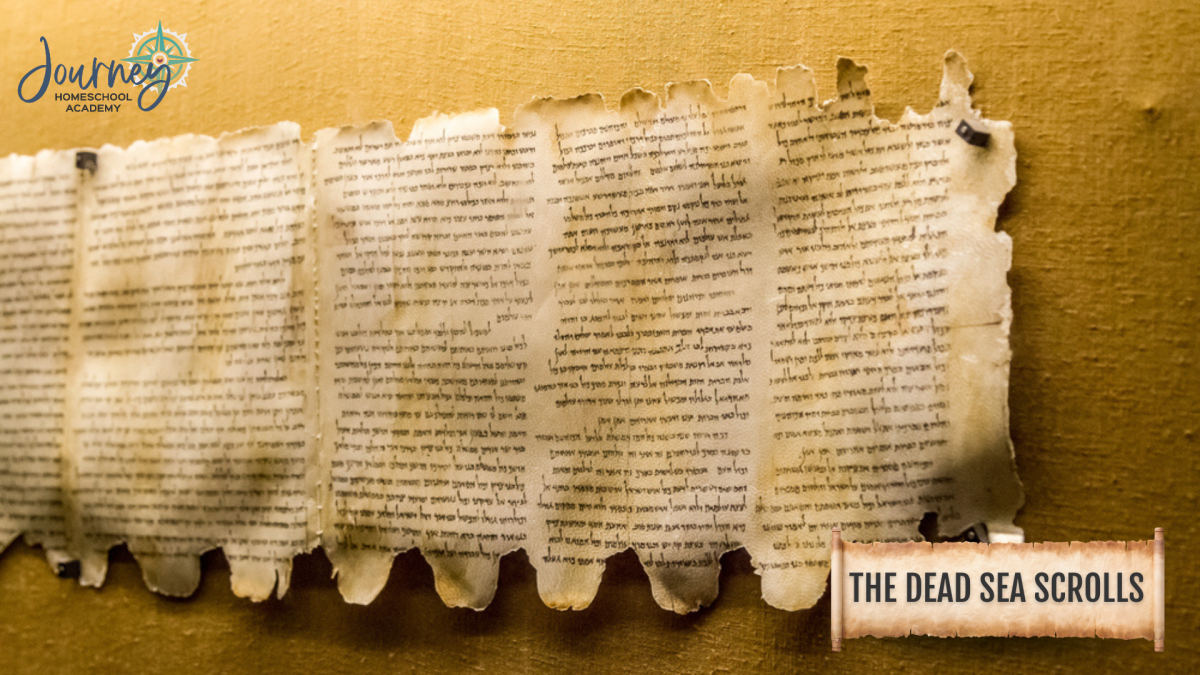
Bible Connection: Psalm 119:89
Few discoveries have confirmed the Bible’s reliability like the Dead Sea Scrolls. Between 1947 and 1956, shepherds found ancient scrolls stored in clay jars in caves near the Dead Sea. These manuscripts include portions of nearly every Old Testament book, written over 2,000 years ago.
When compared to modern Hebrew texts, the scrolls are nearly identical. That means the Bible we read today matches what believers read thousands of years ago.
💡Homeschool idea: Have your teen read Isaiah 53 from their Bible, then look up the same passage from the Dead Sea Scrolls online. Talk about how God has preserved His Word through time.
💡Sources:
- The Dead Sea Scrolls Digital Project – Israel Antiquities Authority
- Smithsonian Magazine: The Dead Sea Scrolls
5. The Pilate Stone
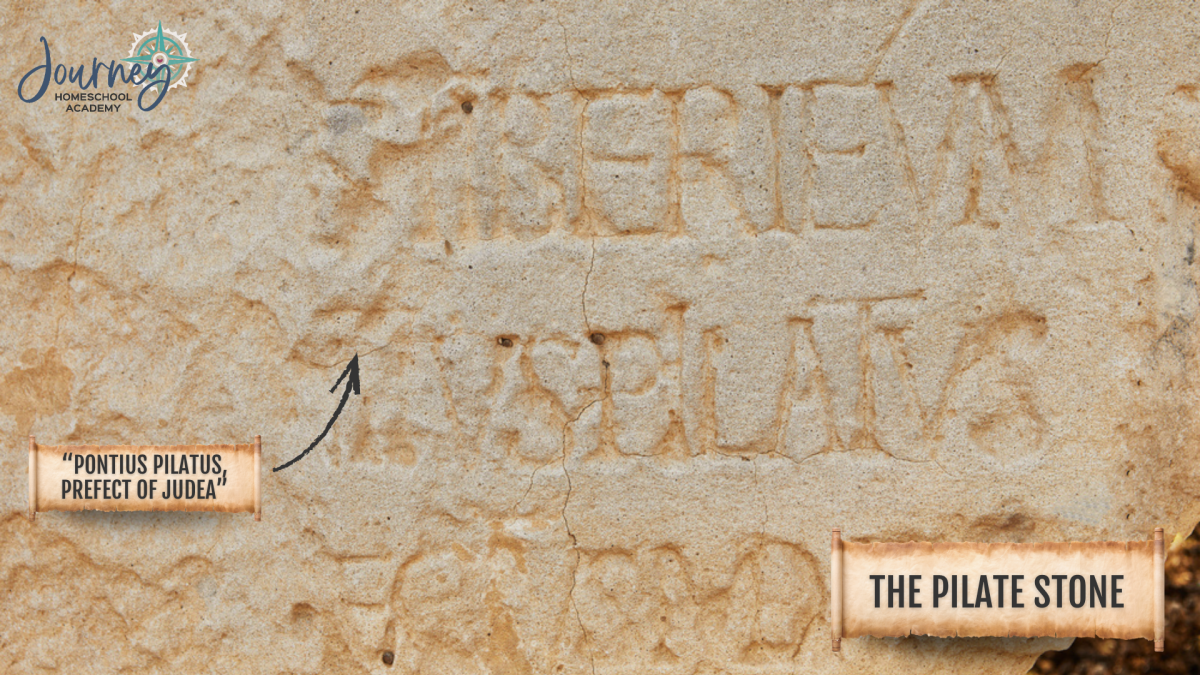
Bible Connection: Luke 23:1–25
Until the 1960s, some historians doubted whether Pontius Pilate really existed. That changed in 1961 when archaeologists discovered a limestone block in the ruins of Caesarea Maritima. The inscription mentioned “Pontius Pilatus, Prefect of Judea.”
The stone confirmed that Pilate was indeed the Roman governor who sentenced Jesus to death, just as the Gospels record.
💡Homeschool idea: Read Luke 23 together and have your student research what the Roman legal system was like. Discuss how God used real political powers and real people in His plan of salvation.
💡Sources:
Bringing Archaeology to Life in Your Homeschool
You don’t need to pack up and fly to Jerusalem to make biblical archaeology come alive. Here are a few ways to weave it naturally into your homeschool:
- Take a virtual museum tour together, such as the Israel Museum or the British Museum.
- Create a Bible and History wall timeline showing where these discoveries fit with the stories your teens are reading.
- Use maps and documentaries to help your students picture the world of Scripture.
- Talk about the “why” behind each find. Archaeology doesn’t replace faith; it reinforces it.
Courses like Journey Homeschool Academy’s Equipped! Bible curriculum are designed with this approach in mind. They help students explore Scripture in its historical and cultural context, so the Bible becomes more than just words on a page—it becomes real.
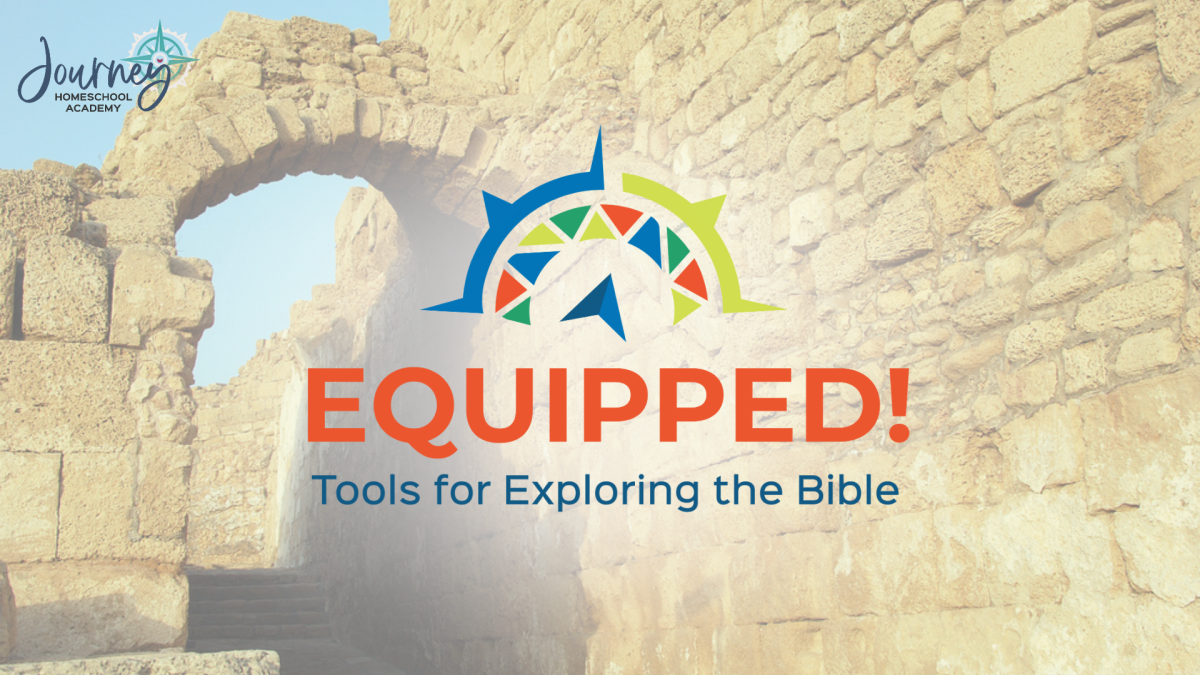
Faith You Can See and Touch
Each of these discoveries reminds us that the Bible’s stories aren’t distant legends. They happened in specific places, involving real people, under the same sun and stars we live under today.
When we help our teens see that truth, faith becomes something they can hold in their hands, not just in their hearts.
Archaeology won’t create belief, but it does confirm what believers have always known. The God who inspired Scripture also left His fingerprints all over history.
So next time your student asks, “How do we know the Bible is true?”, you can smile and say, “Let’s take a look at what’s been dug up.”
